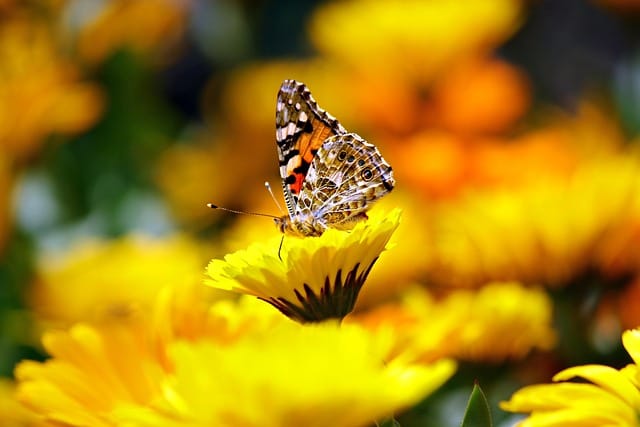Promoting pollinators: Painted ladies
Painted Ladies (Vanessa cardui) are a species of butterfly commonly found in various parts of the world

In this article:
- Introduction to the Painted Ladies Pollinator
- Physical Description and Habitat
- Life Cycle and Reproduction
- Importance of Pollination
- Diet and Feeding Habits
- Behavioral Characteristics
- Migration Patterns
- Threats and Conservation Status
- Unique Adaptations and Survival Strategies
- Interactions with Humans and Agriculture
- Research and Study Findings
- Efforts for Pollinator Protection
- Promoting Pollinator-friendly Gardens
- Conclusion and Future Outlook
Introduction to the Painted Ladies Pollinator
Painted Ladies (Vanessa cardui) are a species of butterfly commonly found in various parts of the world. They belong to the Nymphalidae family and are known for their role as important pollinators.
Physical Description and Habitat
Painted Ladies have distinctive orange-brown wings with black and white markings. Their wingspan measures around 2 to 2.75 inches (5 to 7 centimeters). They are highly adaptable and can be found in a wide range of habitats, including gardens, meadows, grasslands, and deserts.
Life Cycle and Reproduction
The life cycle of a Painted Lady consists of four stages: egg, larva, pupa, and adult. The females lay their eggs on host plants, which often include thistles and mallows. Once the eggs hatch, the caterpillars feed on the leaves of their host plants. After pupation, the adult butterfly emerges and is then ready to reproduce.
Importance of Pollination
Painted Ladies play a vital role in pollination. As they feed on nectar from various flowering plants, they inadvertently transfer pollen from the male parts of a flower to the female parts, enabling plant reproduction and the production of fruits and seeds.
Diet and Feeding Habits
Adult Painted Ladies primarily feed on nectar from a variety of flowers, including marigolds, zinnias, and asters. Their long tongues allow them to access nectar in tubular flowers. As caterpillars, they consume leaves from host plants, helping to control plant populations in the ecosystem.
Behavioral Characteristics
Painted Ladies are known for their strong flying abilities and agility. They are diurnal, meaning they are active during the day. These butterflies are also social and can often be seen in groups, particularly during migration.
Migration Patterns
Painted Ladies are famous for their long-distance migrations. They undertake annual migrations, flying thousands of miles across continents. These migrations occur in response to seasonal changes, availability of resources, and breeding requirements.
Threats and Conservation Status
While Painted Ladies are considered a species of least concern in terms of conservation status, they still face some threats. Habitat loss, pesticide use, climate change, and pollution can all affect their populations. It is crucial to raise awareness and take action to protect these pollinators.
Unique Adaptations and Survival Strategies
Painted Ladies have several unique adaptations and survival strategies. They can tolerate a wide range of temperatures and climates, enabling them to colonize different areas. Additionally, their ability to migrate long distances helps them locate suitable breeding grounds and food sources.
Interactions with Humans and Agriculture
Painted Ladies bring beauty to gardens and natural areas, attracting nature enthusiasts and butterfly observers. Furthermore, their pollination services benefit agriculture by facilitating the growth and reproduction of various crops, including fruits, vegetables, and nuts.
Research and Study Findings
Scientists have conducted extensive research on Painted Ladies to better understand their behavior, migration patterns, and ecological role. These studies have provided insights into their conservation needs and the importance of creating pollinator-friendly habitats.
Efforts for Pollinator Protection
Efforts to protect Painted Ladies and other pollinators include creating and preserving habitats with native plants, reducing pesticide use, and supporting conservation organizations. Collaboration between researchers, policymakers, and the public is crucial in implementing effective pollinator protection strategies.
Promoting Pollinator-friendly Gardens
Individuals can contribute to pollinator conservation by creating pollinator-friendly gardens. Planting a variety of native flowering plants, providing water sources, avoiding pesticide use, and creating sheltered areas can all help attract and support Painted Ladies and other pollinators.
Conclusion and Future Outlook
Painted Ladies are fascinating pollinators that contribute significantly to the environment and agricultural productivity. By understanding their biology, promoting conservation efforts, and creating pollinator-friendly spaces, we can ensure their survival and maintain the delicate balance of our ecosystems for generations to come.
